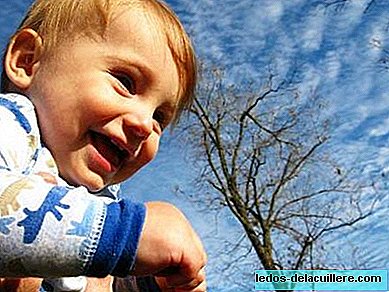
Yesterday we explained a little how babies grow during the first year and today we will continue with the rest of the years and other related topics to finish the topic: How and how much a child grows during childhood.
How much do the rest of the years grow?
We have seen how much a baby can grow during the first year of life and now we are going to see how much they grow, on average, during the following years.
- Between twelve and 24 months (two years) they grow an average of 12 cm.
- Between 2 and 3 years they grow an average of 8 cm.
- Between 3 and 4 years they grow an average of 7 cm.
- Between 4 and 5 years they grow an average of 6 cm.
- From the age of 6 and until adolescence, they grow an average of 4 cm per year (in adolescence the growth increases again).
Factors that influence growth
- The genetic: If the parents are short, most likely (and almost forced) is that the child be short. Similarly if the parents are tall, their children will surely be tall too. Genetics is responsible for about 50-60% of the final size of an individual.
- Feeding: It has an influence of between 20% and 30% in height, however in our environment there is not much relationship, because we have food available and eating more does not mean growing more, but getting fatter. Feeding would affect a child if he were really malnourished (developing countries).
- The endocrine system (hormones): There are several hormones that regulate the growth of children. If there is a problem with any of them, it can lead to a decrease or increase in expected growth.
- Chronic diseases: Some diseases alter the usual growth rate. When treated, the child grows back normally.
- Physical exercise: Sport and physical activity in general stimulates the development of bone growth cartilage and increases blood circulation in the bones. Development aid in general, although in excess it could be harmful (competitive sports that require many hours of training and abundant physical loads at an early age).
These last factors (endocrine system, chronic diseases and physical exercise) have an influence, more or less, of 10% in the height of a person.
How much will my child measure as an adult?
Well, this is the million dollar question (well, maybe not so much). It is difficult to make an exact prediction because, as we have said, there are factors that affect growth in one way or another and among them is genetics, capricious as it is, that can make a child inherit genes from grandfather Miguel, who measured five hundred like grandfather Juan, who didn't go from sixty meters.
Despite this, there are two ways to make a quick calculation that will give us an approximate idea of how tall our child will be.
Formula 1:
If it is a child we must add the height of the father in cm, the height of the mother and add 13 cm (for example: 175 cm of the father + 159 cm of the mother + 13 cm = 347). With the result we will make a division between 2 (347/2) and the result will be the expected height. In our case 173.5 cm.
If she is a girl, the formula is exactly the same with the exception that the 13 cm should be subtracted (175 cm from the father + 159 cm from the mother - 13 cm = 321). We divide this result by two and obtain an expected height of 160.5 cm.
Formula 2:
In this case, part of the growth of the boy or girl is taken into account, since the height they have at the time of reaching 2 years is taken as a reference.
The formula is as follows: We multiply by two the size of the boy or girl at two years and add 5 cm. The result will be the size expected in adulthood. (Example: 85 cm at two years x 2 = 170 cm, to which we add 5 cm to obtain the definitive measurement, which is therefore 175 cm).
Photos | Flickr - OakleyOriginals, Truth Went Trendy In Babies and more | How and how much does a child grow during his childhood (I), How much will he measure ?, Interpretation of the weight and growth charts by Carlos González (I), Growth speed in children












